Sights and Activities
Below are the places we saw and activities completed while visiting Portugal:
Porto
Torre dos Clerigos: this tall bell tower is part of the Clérigos Church that was built in 1750 for the Brotherhood of the Clérigos (Clergy) by Nicolau Nasoni, an Italian architect and painter.
Mercado do Bolhao: we walked through this market with fish, vegetable, and floral vendors whose construction is characterized by its neoclassical architecture design.
Igreja de Sto Ildefonso: this eighteenth-century church was completed in 1739 and features a façade of beautiful azulejo (blue tiles) tilework.


Estacao de Sao Bento: inaugurated in 1916, this historical train station is known for its azulejos that depict scenes of the history of Portugal. We spent some time admiring the 20,000 tiles that depict landscapes, ethnographic scenes, and events such as the Battle of Valdevez (1140), the meeting of the knight Egas Moniz and Alfonso VII of León (12th century), the arrival of King John I and Philippa of Lancaster in Porto (1387), and the Conquest of Ceuta (1415).
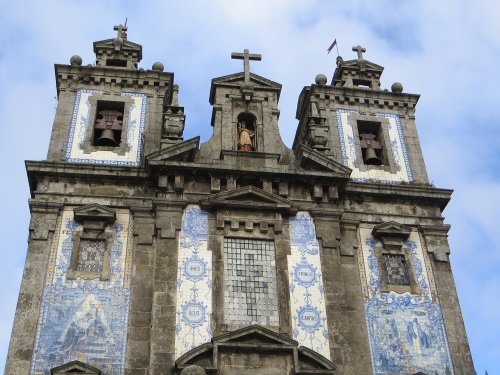

Sé do Porto: the Porto Cathedral is one of the city’s oldest monuments and one of the most important Romanesque monuments in Portugal. The current cathedral underwent construction around 1110 and was completed in the 13th century.
Muralha Fernandina: we toured the small remains of the medieval walls that once protected the city in the 15th century.
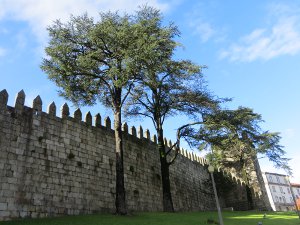
Ponte Luis I: a metal arch bridge that spans the Douro River between the cities of Porto and Vila Nova de Gaia. At the time of construction, 1886, its span of 172 m (564 ft) was the longest of its type in the world.
Ribeira (Riverside) Neighborhood: a historical center of the city that is designated as a World Heritage by UNESCO. The area spreads alongside the Douro River and since the Middle Ages it was used for intense commercial and manufacturing activity. It is now a popular tourist attraction with local bars and restaurants.
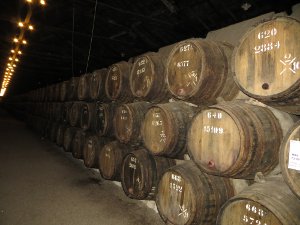
Port Tasting: we crossed the Duoro River to Vila Nova de Gaia to taste the city’s famous port wine. We visited two lodges: we first toured Taylor’s Port Cellars and then listened to fado while enjoying our tasting in Quevedo Port Cellars. We quickly learned why the city received its name!
Museu do Vinho do Porto: this museum traces the history and commerce of wine and port making.
Lisbon
Castelo de Sao Jorge: sitting high above the city with stunning views this Moorish castle dates from medieval period of Portuguese history.
Paroquia de Sao Vicente de Fora: this 17th-century church and monastery is one of the most important monasteries and mannerist buildings in the country.
Panteao Nacional: a 17th-century city monument that was converted from the National Pantheon into the Church of Santa Engrácia in the 20th century. Many important Portuguese personalities are buried here.

Museu do Fado: this small museum provides coverage of the history of fado from its working-class roots to international stardom.
Mosteiro dos Jeronimos: this monastery is a great example of Manueline architecture with stunning carvings and ceramic tiles. It was constructed in 1496 and was classified a Unesco World Heritage site in 1983.
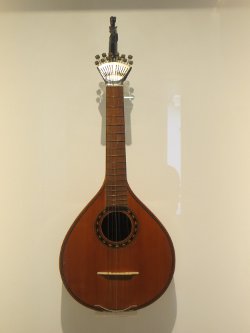
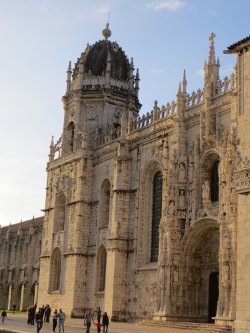
Torre de Belem: this fortified tower symbolizes the voyages that made Portugal powerful. The tower was built in the early 16th century and is an example of Portuguese Manueline style architecture. It is also a Unesco World Heritage site.
Praça do Comércio: the original square was destroyed by an earthquake and then “Commerce Square” was completely remodeled as part of the rebuilding of the downtown from 1750 to 1777 during the reign of Dom José I, King of Portugal.
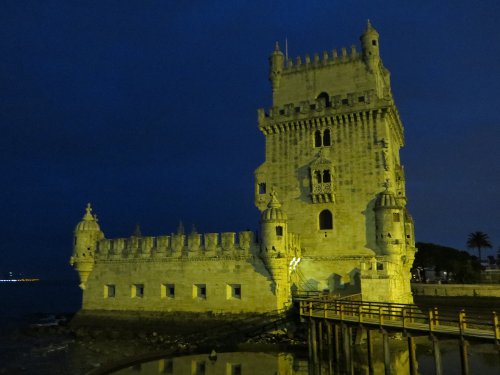
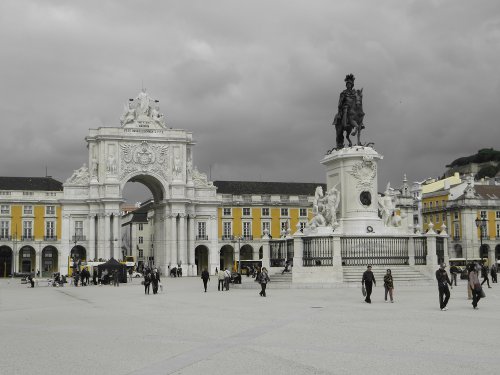
Santuario Nacional de Cristo Rei: the Christ the King statue is a Catholic monument and shrine dedicated to the Sacred Heart of Jesus Christ overlooking the city. It was inspired by the Christ the Redeemer statue in Rio de Janeiro. We took a ferry to cross the Tagus River, then hiked up to the base of the monument, and finally an elevator to reach the top.
Sé de Lisboa: the Lisbon Cathedral is a Roman Catholic Cathedral and the oldest church in the city. The construction of the church started in 1147, it has survived many earthquakes, and been modified several times.
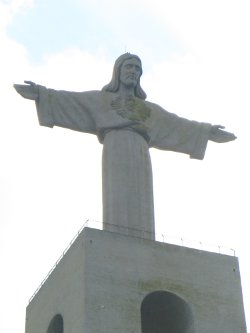


Museu Nacional do Azulejo: located in a 17th-century convent, this museum showcases Portugal’s artful azulejos (blue tiles).
